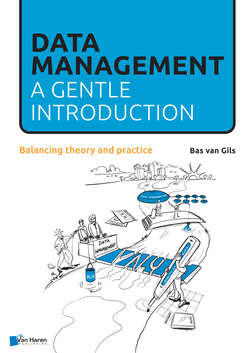Читать книгу Data Management: a gentle introduction - Bas van Gils - Страница 7
На сайте Литреса книга снята с продажи.
Оглавление
“Language (die Sprache) is always a mediator”, the famous Von Humboldt wrote 200 years ago. “It is between the finite and the infinite”, he continues, “and at the same time between one individual and the other”. In traditional philosophical categories: as a subject-object relator and a subject-subject relator. That Von Humboldt spoke using the terms finite and infinite says something about his view of the human subject (its finiteness, in several respects). It is important to note that when Von Humboldt calls language a mediator, he explicitly wants to say that the two things that get mediated do not exist independently of each other, but that in a way they come into existence through the mediation. The mediator is more than a formal relationship. That is why for him language is not a coding system where an (arbitrary) sign is determined for something that already exists for us. Such a coding system does not make language, it presupposes language.
To some extent, the characterization of Von Humboldt for language can also be applied to data, the subject of this book. Yes, the formal data structures in a computer have been designed, so as such they are not language in the Von Humboldt sense. Still, they draw on language, and so take over some of its characteristics. Data also mediates between subjects. This is one reason why data needs to be protected, as identified in chapters 17 and 21 of this book, and why “shared understanding” is a fundamental goal. It is also mediating with an infinite world around us. To use a phrase of Bas, “data codifies what we know about the world”. At another place, data is defined as the combination of fact and meaning. If this is true (and who am I am to question Bas?), it means that managing data has two rather different faces. Because managing facts, as stored in files on a disk, is quite different from managing such an intangible thing as “meaning”. I don’t want to push this point too much, but I think here is one reason why data management is not simple and not comparable to the management of physical assets such as vehicles or library books, in spite of some similarities.
When data is a mediator, it also runs the risks of the fate of the mediator: always to fall in between. So that neither the IT department nor the business unit cares for it; that there is no budget for it. That it is seen as instrumental only, and so is not a genuine concern in its own right. In the short history of IT so far we have learned that this would a big mistake. Data needs to be recognized as an asset, and needs to be managed. Not as a goal in its own of course – a point that is stressed by Bas several times in this book. It remains a mediator, but still, it needs to be managed properly. Therefore I am glad with this book that takes data management seriously. A book that tries to integrate insights on data management from theory and practice. A book that can not only serve practitioners and companies that struggle with data management but that can also be a good reference text for academic courses in the field of Information Management or Data Science. I wish it all the best!
Dr. Hans Weigand, Associate Professor Information Systems, Tilburg University
October 2019
